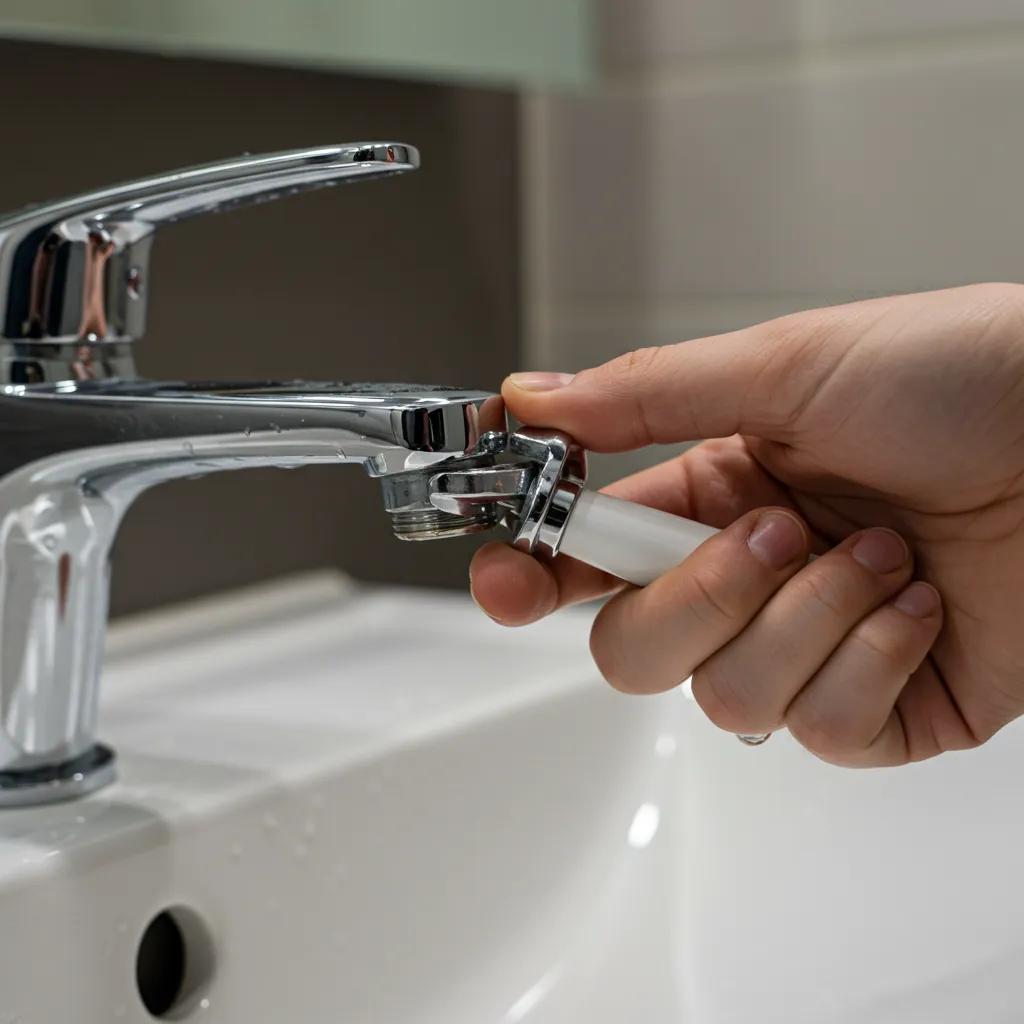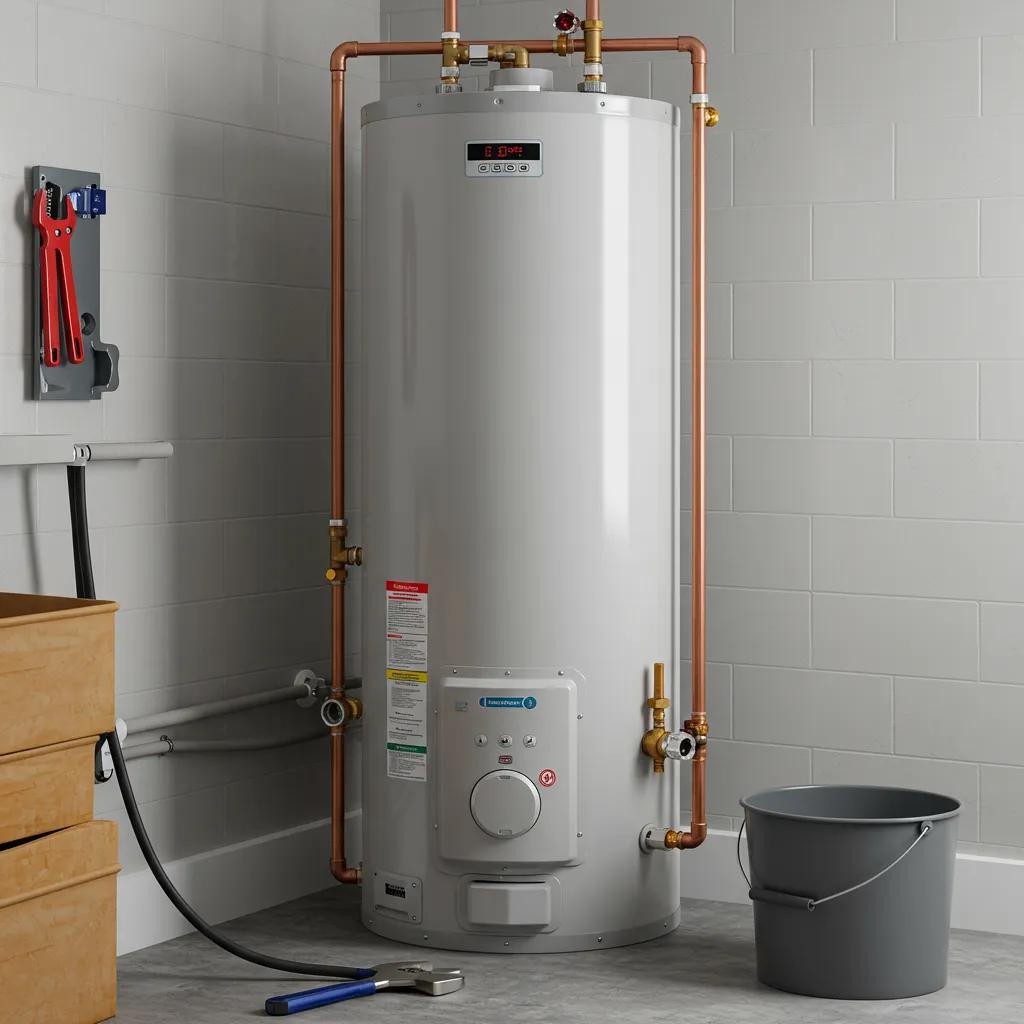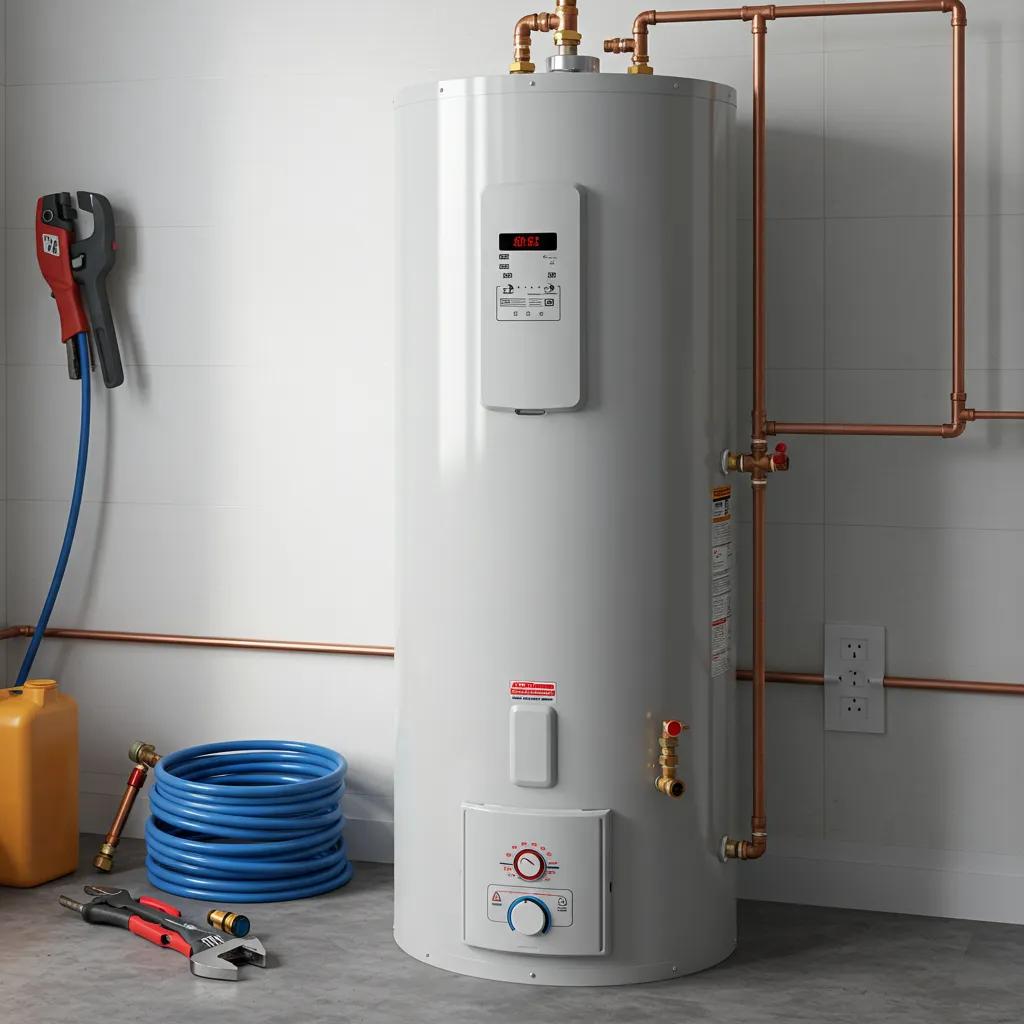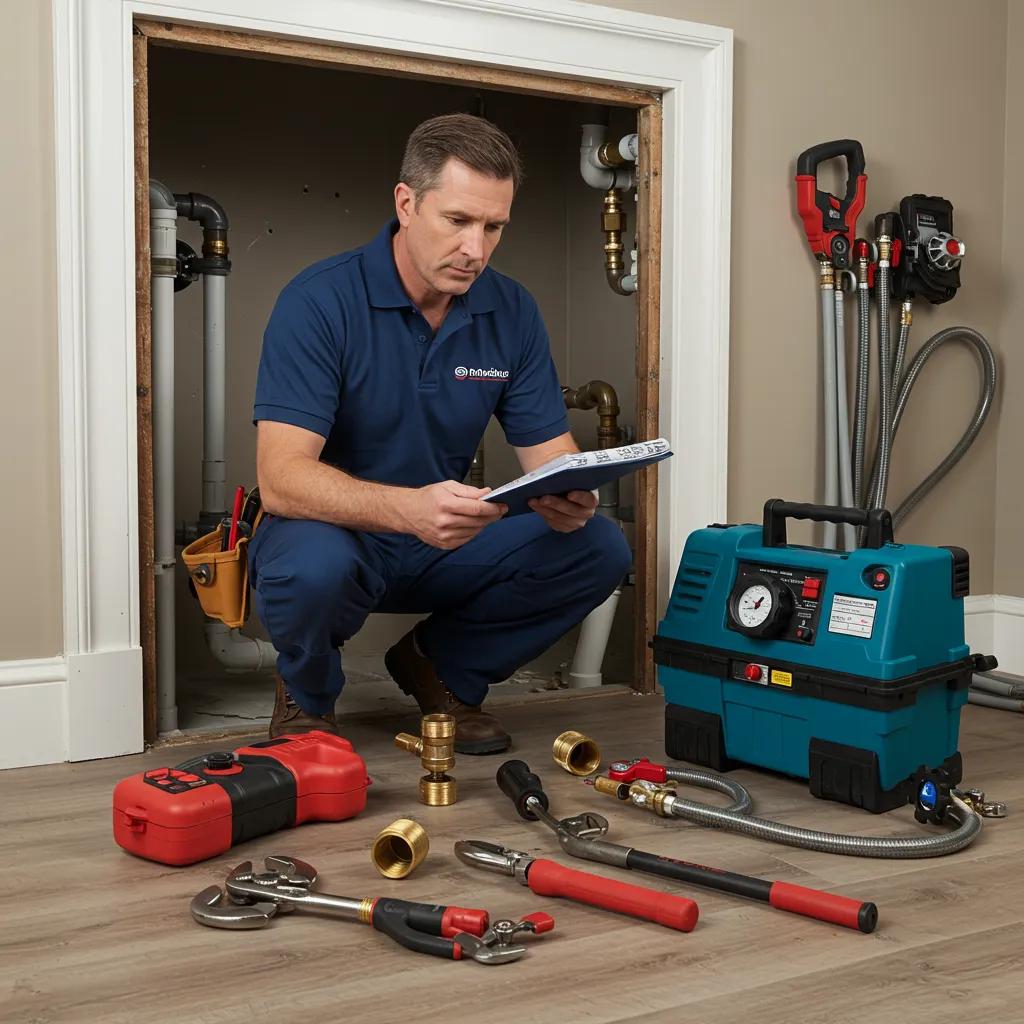Top 5 Plumbing Issues Homeowners Encounter and Simple Solutions to Fix Them Fast

Every year, homeowners lose hundreds of gallons of water and face unexpected repair costs due to five recurrent plumbing failures. What are the most common plumbing issues homeowners face and how to fix them fast? This guide uncovers the top five plumbing challenges—clogged drains, leaky faucets, running toilets, low water pressure, and water heater malfunctions—explaining their causes, quick DIY remedies, and when to engage trusted professionals. You’ll discover step-by-step methods for clearing sinks, tightening valves, adjusting toilet components, diagnosing pressure regulators, and flushing heaters. Each solution includes preventive tips tailored to Erie, PA’s climate and wiring minimal tools with maximum impact. Backed by C. Carlin Plumbing’s local expertise in plumbing and HVAC services, you can resolve minor failures yourself and know precisely when to call for reliable professional assistance, ensuring your system runs smoothly year-round.
What Are the Most Common Plumbing Problems Homeowners Face?
Home plumbing systems most frequently fail in five distinct ways, causing water waste, inefficiencies, and potential damage. These issues arise from normal wear, mineral buildup, and seasonal stresses that compromise pipes and fixtures. Understanding their prevalence helps homeowners prioritize quick fixes and long-term maintenance.
Here are the five core failures encountered in residential plumbing:
- Clogged Drains – Blockages in kitchen and bathroom pipes caused by grease, hair, soap scum and debris that restrict water flow.
- Leaky Faucets – Dripping taps due to worn washers, O-rings or corroded valve seats that lead to constant water loss.
- Running Toilets – Faulty flappers or fill-valve misadjustments that allow continuous water circulation and waste.
- Low Water Pressure – Reduced flow from showerheads and spigots caused by sediment buildup, regulator issues or pipe corrosion.
- Water Heater Problems – Lack of hot water, leaks or sediment accumulation in tanks that impair performance and energy efficiency.
These recurring failures account for the majority of service calls in Erie County, emphasizing the need for rapid detection and action. Diagnosing each issue precisely guides the choice between simple DIY steps and professional drain cleaning or component replacement.
Why Are Clogged Drains the Leading Plumbing Issue?
Clogged drains lead service requests more often than any other problem because everyday residues accumulate rapidly inside household pipes. Mineral deposits, cooking grease and hair intertwine with soap build-up to form blockages that slow or reverse drainage, causing backups in sinks and tubs. Over time, pressure builds beneath the obstruction, risking pipe damage and foul odors.
Homes in Erie, PA, experience increased sediment deposits from hard water, accelerating block formation. Early signs include unusual gurgling noises and slow water evacuation. Recognizing these symptoms prevents full stoppages and empowers timely intervention.
How Do Leaky Faucets Affect Your Home and Water Bill?
A dripping faucet wastes roughly 3,000 gallons of water per year, significantly inflating utility costs and depleting resources. Most leaks originate from deteriorating washers, hardened O-rings or loose packing nuts, which fail to seal water flow under constant pressure. Even a minor trickle compounds over weeks, leading to higher bills and potential water damage around fixtures.
Replacing worn parts or tightening connections immediately halts leaks and conserves thousands of gallons annually, providing both environmental and financial benefits.
What Causes Toilets to Keep Running and Waste Water?
A continuously running toilet typically stems from a misaligned flapper seal or an improperly set fill valve. When the rubber flapper fails to close correctly, water leaks from the tank into the bowl, triggering the fill valve to refill indefinitely. Float mechanisms stuck above the proper water line also prevent shutoff.
Left unattended, a running toilet can waste up to 200 gallons per day, stressing municipal systems and inflating homeowner bills.
Why Is Low Water Pressure a Frequent Concern?
Low water pressure emerges when narrowing occurs in supply lines due to corrosion, scale accumulation or a malfunctioning pressure regulator. Sediment and rust build inside older galvanized pipes, constricting flow and causing weak showers and slow kitchen faucets. Pressure regulators that fail to maintain adequate line pressure further reduce output.
Identifying whether the issue is localized (single fixture) or systemic (whole house) clarifies whether simple aerator cleaning or professional pipe replacement is required.
What Are Typical Water Heater Problems Homeowners Experience?
Water heaters commonly suffer from sediment buildup, thermostat failures and corrosion that degrade performance over time. Accumulated minerals settle at the tank bottom, insulating heating elements and reducing heat transfer, which leads to lukewarm tap water. Rusting tanks can develop leaks, risking flooding and higher energy usage.
Regular flushing and component checks ensure consistent hot water delivery, prolong equipment life, and prevent unexpected breakdowns.
How Can You Quickly Fix a Clogged Drain at Home?

Immediate action on a blocked drain restores flow and prevents further buildup. A clogged drain is a blockage in residential drainpipes that stops water from evacuating, often triggered by grease, hair, food scraps and soap residues. Clearing the obstruction restores normal drainage and prevents pipe damage from pressure buildup.
Use these simple DIY methods to unclog kitchen and bathroom drains before considering professional cleaning:
- Plunge the Drain – Firmly seal the sink or tub opening and pump the plunger vigorously to dislodge debris.
- Baking Soda and Vinegar Flush – Pour one cup of baking soda into the drain, follow with one cup of vinegar, wait 15 minutes, then rinse with hot water.
- Manual Snake Removal – Insert a drain snake or flexible wire into the pipe, rotate to break up the clog, then pull out debris.
- Enzyme-Based Cleaners – Apply a biological cleaner overnight to dissolve organic matter without harming pipes.
Applying these steps at first signs of slow drainage often clears the line within minutes.
What Are Simple DIY Methods to Unclog Kitchen and Bathroom Drains?
A kitchen or bathroom drain clog forms when grease, food particles, hair and soap combine to restrict flow. Plunging dislodges loose buildup by creating pressure differentials, while eco-friendly baking soda and vinegar react to break down organic residues. Drain snakes mechanically extract debris unreachable by plungers, and enzyme cleaners digest proteins over time.
Regular removal of grease from dishes, hair catchers in shower drains and monthly enzyme treatments can keep lines clear and reduce the need for professional interventions.
When Should You Call a Professional for Drain Cleaning?
Persistent backups, recurring clogs in multiple fixtures or slow drainage despite DIY efforts indicate deeper blockages in main or branch lines.
Professionals use motorized augers and hydro-jetting equipment to remove root intrusions, mineral scale and hardened grease, restoring full flow.
In Erie’s hard water conditions, annual professional cleaning prevents costly sewer line repairs and safeguards against backups.
How Does Preventative Maintenance Help Avoid Drain Clogs?
Preventative maintenance involves regular inspection and cleaning to stop buildup before it solidifies into stubborn blockages.
Seasonal attention—clearing leaves from outdoor drains, flushing kitchen traps bi-weekly and using hair screens—minimizes debris entry. In Erie’s cooler months, preventing oil congealing in pipes and insulating exterior lines reduces clog risks and extends pipe lifespan.
How Do You Repair a Leaky Faucet to Stop Water Waste?

Repairing a leaky faucet halts continuous drips by addressing worn or loose components that fail to seal properly.
A leaky faucet occurs when internal parts degrade or misalign under constant water pressure, causing water to seep through the spout even when valves are closed.

Replacing damaged washers and O-rings typically requires shutting off the water supply, disassembling the faucet handle, swapping in new parts, and reassembling.
Proper sealing restores full shut-off, conserving water and reducing monthly utility expenses.
What Are the Common Types of Faucet Leaks and Their Causes?
Faucet leaks present as a steady drip, stream or spray and arise from deteriorating washers, O-rings, valve seats or loose packing nuts. Compression faucets rely on flat washers that compress against valve seats, while cartridge and ceramic disc designs use seals that wear over time, each requiring specific replacement parts to stop leaks effectively.
What Are the Step-by-Step Instructions to Fix a Dripping Faucet?
- Shut Off Water Supply – Turn off hot and cold valves under the sink.
- Disassemble Handle – Remove decorative cap and screw to access internal components.
- Inspect and Replace Washer or O-Ring – Extract worn part, match size, install new component.
- Reassemble and Test – Tighten all fittings, restore water flow, and confirm drip elimination.
Completing these steps typically takes under 30 minutes with basic tools, eliminating leaks and wasted water immediately.
How Can You Detect Hidden Leaks Early?
Early detection of concealed leaks prevents structural damage and high water bills. Look for unexpected moisture under cabinets, discolored walls or ceilings, mold growth near fixtures, and meter fluctuations when appliances are off. Moisture meters and infrared cameras can locate pipe breaches behind walls, enabling prompt resolution before extensive damage occurs.
What Are Effective Solutions for a Running Toilet?
A running toilet wastes water continuously when internal tank components fail to seal correctly. Replacing or adjusting the flapper and fill valve restores proper tank operation, stopping the constant refill cycle that drives up water bills.
Use these approaches to restore toilet efficiency:
- Replace the Flapper – Remove the old flapper, choose a compatible replacement, hook new flapper over the overflow tube, and confirm a tight seal.
- Adjust the Fill Valve – Raise or lower the float cup or bend the float arm to achieve the correct water level, typically one inch below the overflow pipe.
- Clean Inlet Holes – Scrub sediment from the rim feed holes under the bowl’s edge to improve flush performance and refill accuracy.
Applying these fixes can eliminate daily water waste of up to 200 gallons, significantly reducing utility expenses.
How Do You Replace a Toilet Flapper to Stop Running Water?
A degraded flapper fails to seat properly, allowing water to leak into the bowl. To replace it, turn off the water, flush to empty the tank, detach the chain, remove the old flapper, fit the new flapper onto pegs, reconnect the chain with slight slack, and restore water. A snug fit ensures a watertight seal.
How Can Adjusting the Fill Valve Fix Toilet Running Issues?
An improperly set fill valve allows water to exceed the safe fill line, spilling into the overflow tube and forcing constant refill cycles. Adjust the float height by tightening the adjustment screw or sliding the float clip until the water shuts off at the correct level, preventing improper drain into the overflow.
What Impact Does a Running Toilet Have on Your Water Bill?
A single running toilet can add $100–$200 in annual water costs due to continuous flow. Stopping the leak through simple flapper or fill valve repairs saves up to 10,000 gallons per household each year, providing immediate and long-term financial relief.
How Can You Diagnose and Fix Low Water Pressure Problems?
Low water pressure diminishes shower enjoyment and faucet efficiency, often arising from sediment, regulator faults or pipe corrosion. Diagnosing the root cause of pressure loss enables targeted solutions that restore full flow and system performance.
Begin by measuring pressure with a gauge at an outdoor spigot. If readings fall below 40 psi, inspect the pressure regulator near the main shutoff and clean faucet aerators. For localized issues, remove and soak aerators in vinegar to dissolve mineral deposits. Systemic blockages in aging galvanized pipes may require partial re-piping for sustained pressure improvement.

Addressing low water pressure restores optimal flow for all fixtures and prevents strain on appliances such as water heaters and irrigation systems.
What Are the Main Causes of Low Water Pressure in Homes?
Scale accumulation, failing pressure regulators and corroded galvanized pipes constrict water flow over time. Each cause generates distinct symptoms—sediment blockage yields irregular spurts, regulator failure produces sudden pressure spikes, and corrosion results in chronic low output across multiple fixtures.
How Do You Increase Water Pressure Safely?
Tightening loose connections, replacing clogged aerators and installing booster pumps are safe DIY measures for minor pressure losses. For persistent or widespread issues, scheduling a professional assessment ensures compliance with local codes and secures reliable system upgrades.
How Are Water Heater Issues Related to Low Water Pressure?
Sediment inside water heaters not only reduces heating efficiency but can also restrict hot water output, compounding overall low flow problems. Flushing the tank annually removes debris that impedes both temperature consistency and pressure performance.
What Are Common Water Heater Problems and How Can You Fix Them Fast?
Water heaters fail primarily due to sediment buildup, thermostat malfunctions or corrosion, leading to inadequate heat output, leaks and noisy operation. Quick troubleshooting pinpoints whether DIY flushing, element replacement or professional tank repair is required.
Begin by confirming power supply or gas ignition, then check thermostat settings and listen for rumbling caused by sediment pockets. If hot water delivery is inconsistent, flushing the tank removes debris that impedes heating elements. Small leaks at fittings can be sealed with plumber’s tape, but significant tank corrosion necessitates professional replacement.
Consistent heater maintenance ensures reliable hot water and prolongs appliance life, preventing emergency failures during Erie’s cold seasons.
How Do You Troubleshoot No Hot Water Issues?
No hot water typically indicates a tripped breaker, a faulty thermostat, or a malfunctioning heating element. Reset breakers, test thermostats for correct voltage, and inspect elements with a multimeter before deciding on replacement or professional service.
What Are the Signs of a Leaking Water Heater?
Visible pooling around the tank base, rusted fittings, or dripping from valves signal imminent failure. Leaks often originate from corroded tank walls or loose connections and require immediate attention to avoid flooding.
How Often Should You Flush Your Water Heater to Prevent Problems?
Flushing a tank every six to twelve months removes sediment that reduces heating efficiency and protects elements from premature failure. Regular flushing maintains consistent water temperature and energy performance.
How Can Preventative Plumbing Maintenance Save You Time and Money?
Routine maintenance protects your plumbing investment, reduces emergency calls and extends the life of fixtures and appliances. By performing simple checks and seasonal preparations, homeowners can avoid costly breakdowns and preserve water efficiency.
Key seasonal tasks for Erie, PA residences include:
- Winterize exposed pipes by draining garden hoses and insulating outdoor faucets.
- Inspect and tighten visible fittings to stop emerging drips.
- Flush sinks and tubs monthly with hot water and biodegradable cleaner to minimize buildup.
- Replace faucet aerators and shower heads annually to remove mineral deposits.
- Schedule professional inspections every spring to catch hidden issues before summer usage surges.
Proactive upkeep prevents scaled pipe interiors, undetected leaks and freeze-related ruptures. Establishing a predictable maintenance rhythm saves on emergency repairs and keeps water bills in check.
When Should You Call C. Carlin Plumbing for Professional Help?
No matter how effective your DIY skills, certain plumbing failures demand professional intervention to ensure safety, compliance and long-term reliability. Recognizing these triggers helps you engage C. Carlin Plumbing’s experienced technicians at the right time.
Call for immediate emergency services when encountering:
- Burst pipes flooding living spaces
- Sewer backups threatening health and infrastructure
- Gas line leaks requiring specialized detection and repair
C. Carlin Plumbing provides reliable local solutions in Erie, PA, combining plumbing and HVAC expertise to address complex system interactions. You benefit from prompt scheduling, transparent estimates and professional warranties that protect both your home and investment. To request a service estimate or schedule repairs, reach out to C. Carlin Plumbing’s customer care team for fast, dependable assistance.
Experience peace of mind knowing trusted local professionals are ready to restore your plumbing system’s performance and efficiency on the first visit.



